
Japan has many unique flowers, like cherry blossoms and chrysanthemums. These blooms are part of festivals, art, and stories. Over 5,000 native plants grow here, but 17 stand out for their beauty and meaning.
Each flower tells a tale about nature, history, and feelings.
Explore 17 beautiful Japanese flowers that shape culture. From spring blossoms to summer blooms, they symbolize life and change. Learn how these flowers connect people to traditions and nature’s wonders.
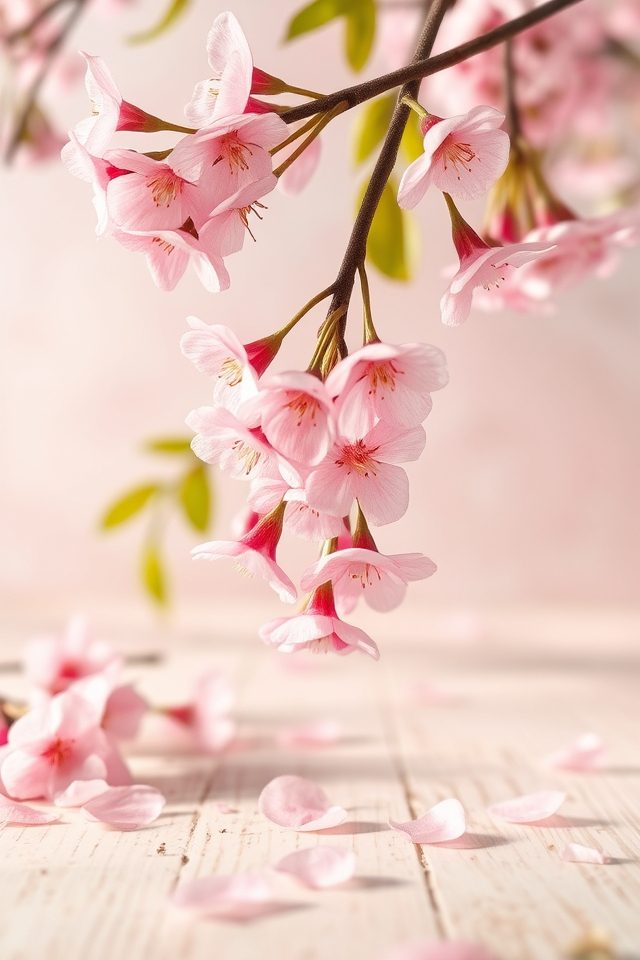
Cherry blossoms, or Sakura, are iconic symbols of Japan, celebrated for their breathtaking beauty and transient nature. Blooming in shades of soft pink and white, these flowers signal the arrival of spring. The cherry blossom festival, Hanami, draws crowds who gather to admire the blossoms in full bloom, reflecting on their fleeting existence. Not only an aesthetic marvel, Sakuras also hold cultural significance, representing renewal and the ephemeral nature of life in Japanese tradition.
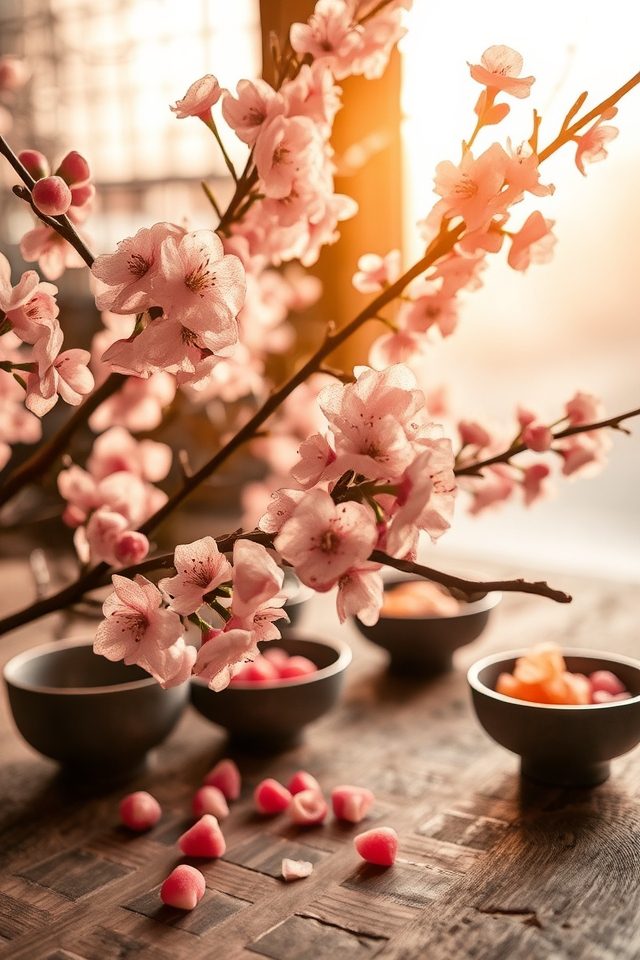
The Plum Blossom, known as Ume in Japanese, is a cherished symbol of resilience and beauty. Blooming in late winter to early spring, its delicate pink and white flowers herald the arrival of warmer days. Ume trees thrive in challenging conditions, reflecting strength amid adversity. In Japanese culture, these blossoms are celebrated not only for their aesthetic appeal but also for their connection to renewal and hope, often featured in poetry, art, and traditional festivals.
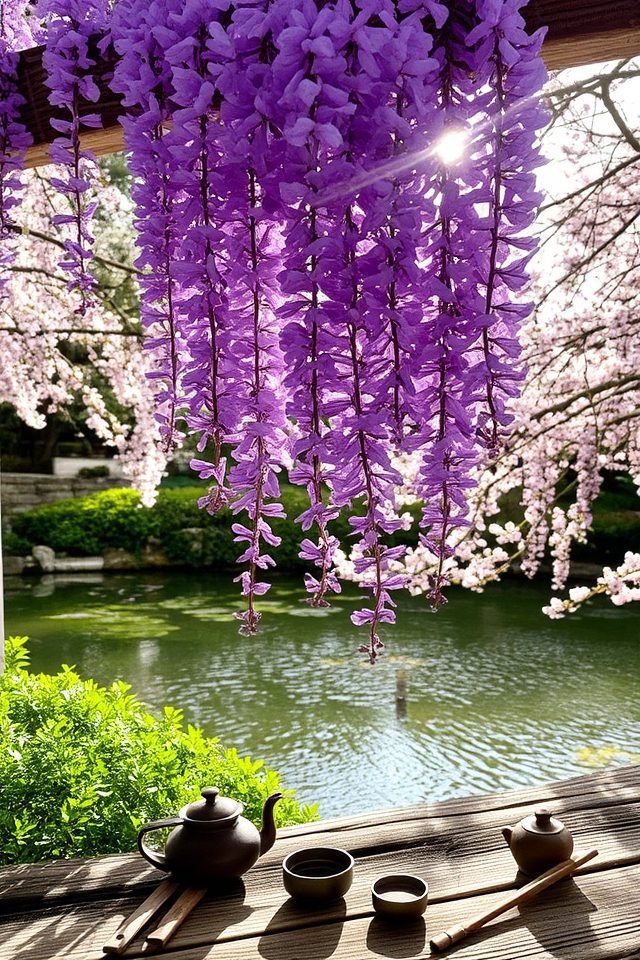
Wisteria, known as Fuji in Japanese, is a stunning flowering plant famous for its cascading clusters of lavender, blue, or white blooms. These fragrant flowers bloom in spring, creating a picturesque display that often adorns gardens and traditional Japanese landscapes. The vine can grow extensively, climbing over trellises and structures, and is celebrated in festivals for its beauty and grace. Wisteria holds cultural significance in Japan, symbolizing love and harmony.
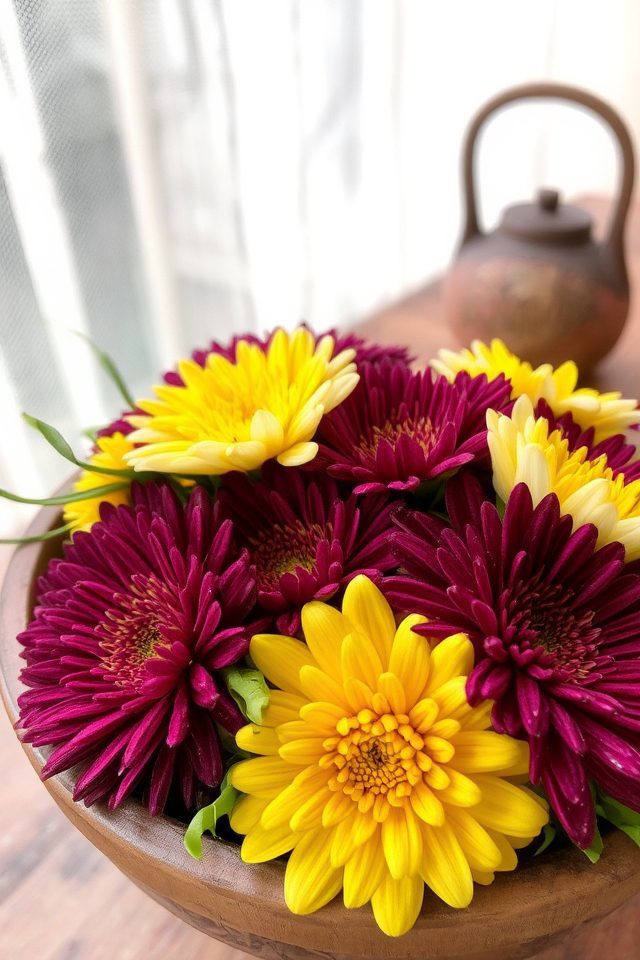
The chrysanthemum, or “kiku,” is a revered symbol in Japanese culture, representing joy and longevity. Blooming in vibrant hues, these flowers typically flourish in the fall, coinciding with Japan’s annual chrysanthemum festivals, where intricate floral displays are showcased. The kiku is also associated with the Imperial Family, appearing on the Chrysanthemum Throne. With their beautiful petals and rich cultural significance, chrysanthemums embody the essence of Japanese aesthetics and seasonal beauty.
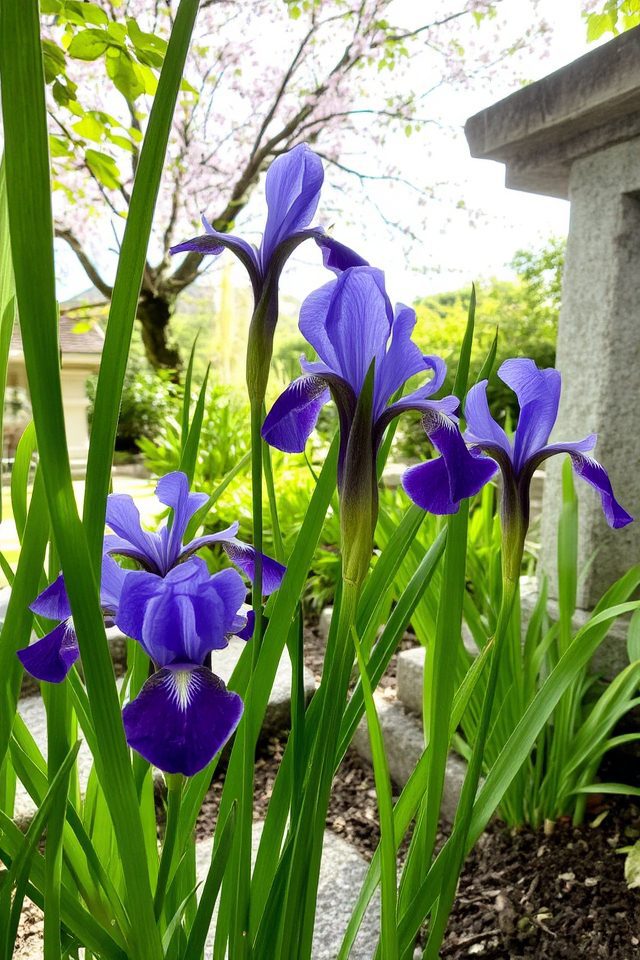
The Iris, known as Ayame in Japan, is a striking perennial flower celebrated for its vibrant colors and graceful form. Typically blooming in late spring to early summer, its elegant, sword-like leaves and stunning blooms come in various shades, including purple, blue, and white. In Japanese culture, Ayame symbolizes courage and honor, often featured in traditional art and festivals. Its beauty and significance make it a beloved flower in Japanese gardens and landscapes.
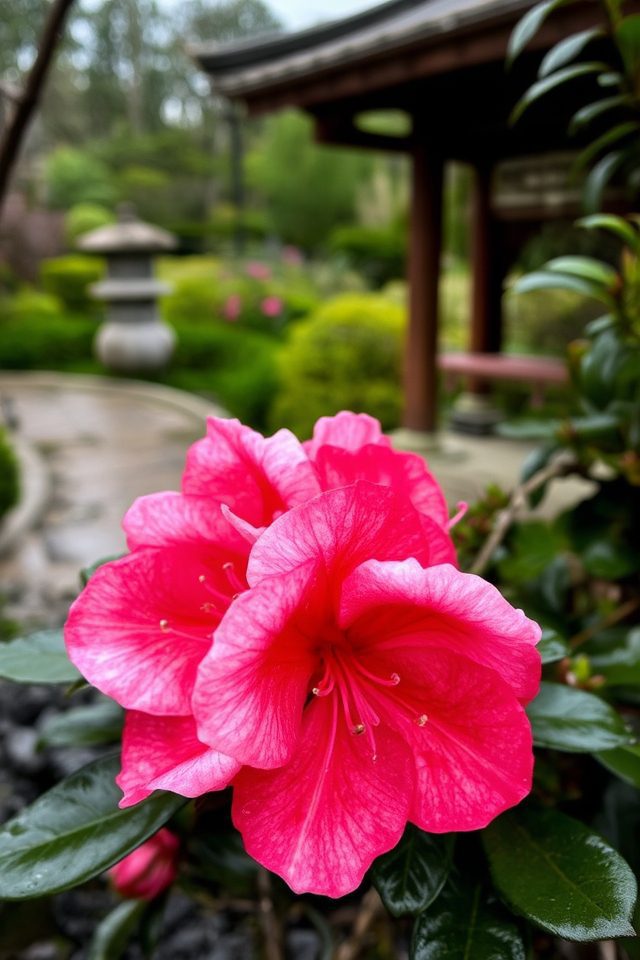
Azalea, known as Tsutsuji in Japan, is a beloved flowering shrub celebrated for its vibrant blooms and lush foliage. Typically blooming in spring, azaleas produce an array of colors, from deep reds and pinks to white and lavender. In Japanese culture, they symbolize elegance and temperance, often adorning gardens and parks during cherry blossom season. The Azalea Festival, held at various locations, highlights these stunning flowers, attracting visitors enthusiastic to appreciate their beauty and charm.
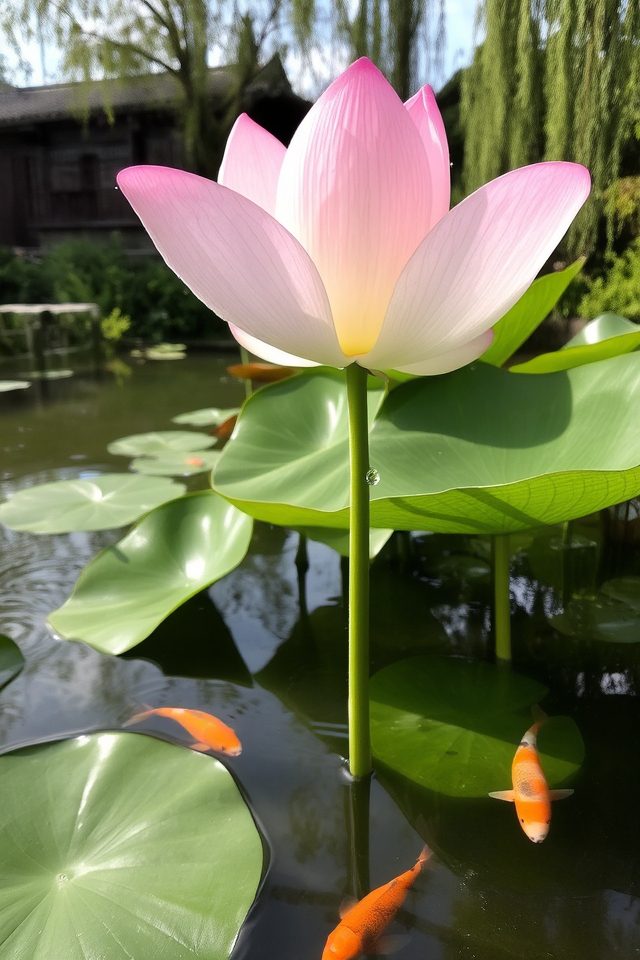
The Lotus, known as “Hasu” in Japanese, is a sacred flower often associated with purity and enlightenment in Buddhist symbolism. This stunning aquatic plant flourishes in serene ponds and still waters, showcasing large, vibrant blossoms in hues of pink, white, and yellow. With its ability to rise from muddy waters, the Lotus serves as a powerful metaphor for resilience and the pursuit of spiritual awakening, making it a beloved emblem in Japanese art and culture.
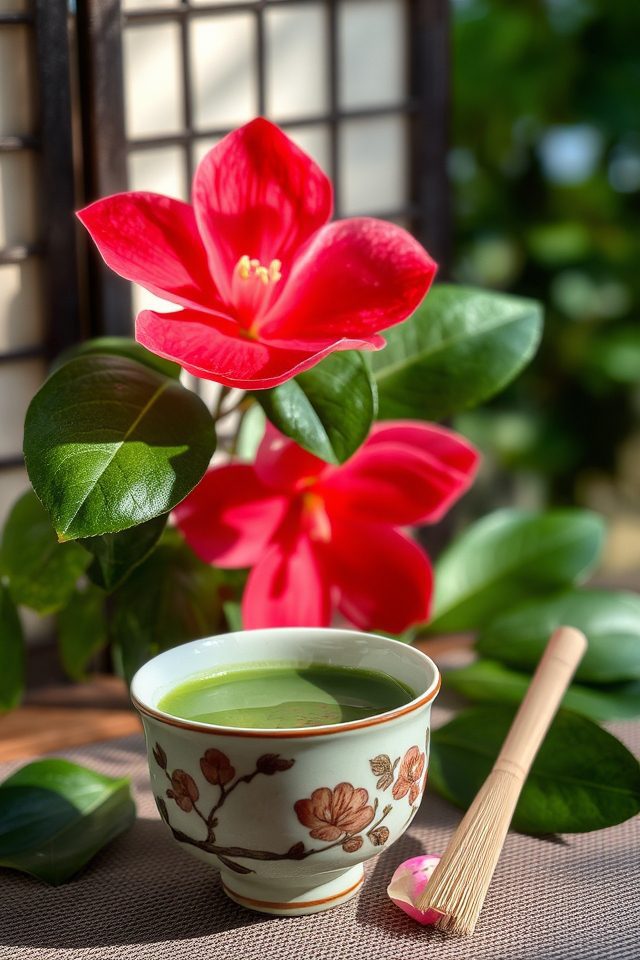
The Camellia, known as Tsubaki in Japanese, is a cherished flower celebrated for its stunning blooms and rich cultural significance. With glossy evergreen leaves, the flower comes in various shades, including white, pink, and red, symbolizing love, admiration, and gratitude. Blooming in winter and spring, Tsubaki is often associated with purity and elegance. It plays an important role in traditional Japanese tea ceremonies and is frequently featured in art and poetry, embodying the beauty of fleeting moments.
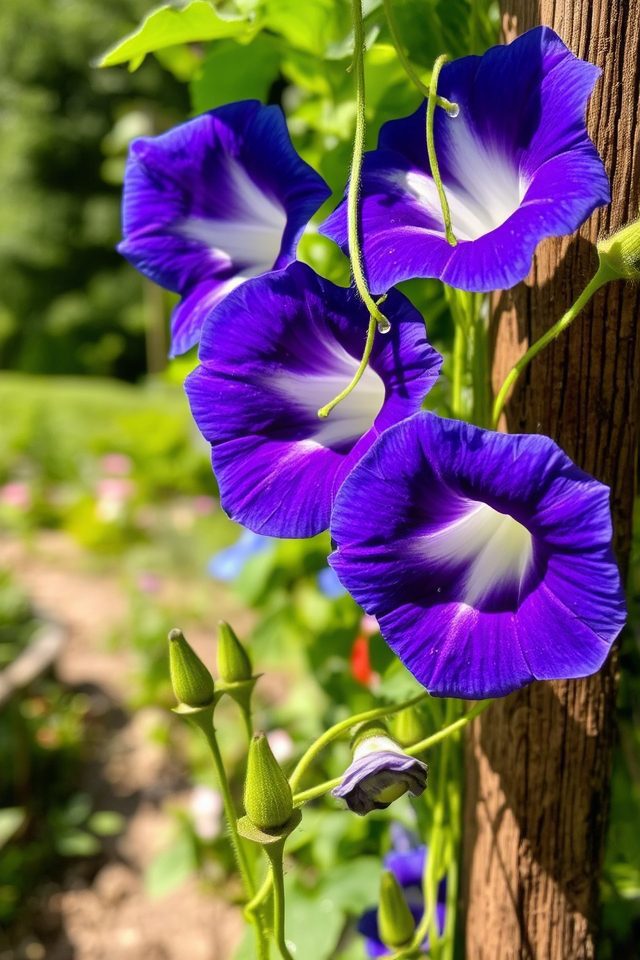
The Japanese Morning Glory, known as Asagao, is a vibrant perennial vine celebrated for its stunning trumpet-shaped flowers. Blooming in various hues, including deep blue, purple, and white, Asagao opens in the morning and closes by noon, making it a symbol of transience in Japanese culture. Traditionally associated with summer, these flowers thrive in warm conditions and are often featured in festivals and gardens, reflecting Japan’s appreciation for natural beauty.
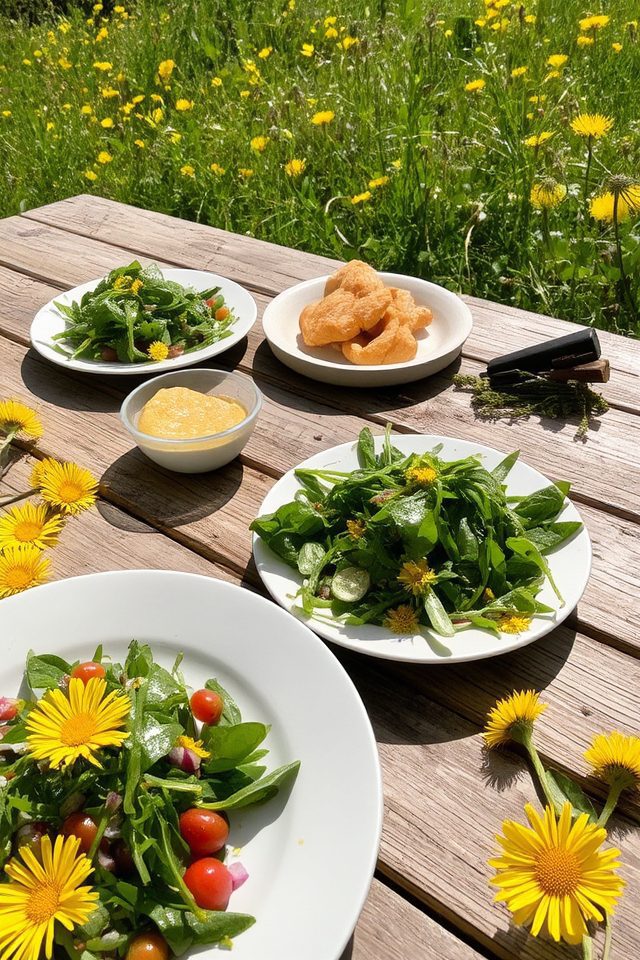
Dandelions, known as “tanpopo” in Japanese, are resilient wildflowers celebrated for their bright yellow blooms and fluffy seed heads. They symbolize perseverance and renewal, thriving in various environments, including urban areas and meadows. In Japanese culture, tanpopo is often associated with childhood nostalgia and simplicity. Their delicate, airy seeds disperse with the slightest breeze, evoking a sense of freedom and fleeting beauty, making them a beloved motif in art and poetry.
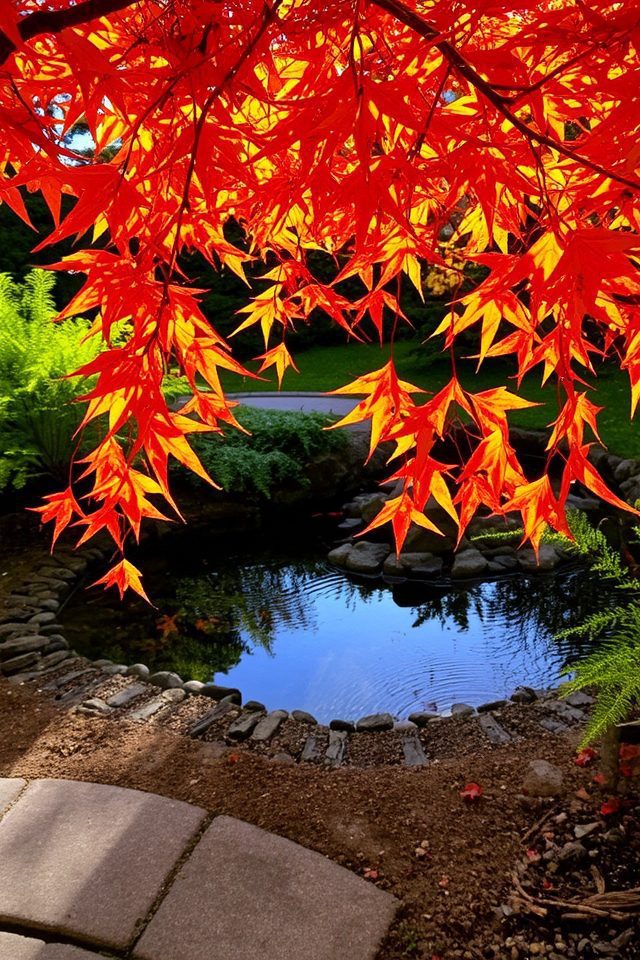
The Japanese Maple, or Momiji, is celebrated for its stunning foliage and graceful form. Known for its vibrant red, orange, and yellow leaves that emerge in spring and intensify during autumn, this small tree is a symbol of Japan’s natural beauty. Its delicate, cascading branches and intricate leaf shapes add elegance to gardens and landscapes, making it a popular choice for bonsai. Momiji not only embodies aesthetic beauty but also reflects the changing seasons, enriching Japanese culture.
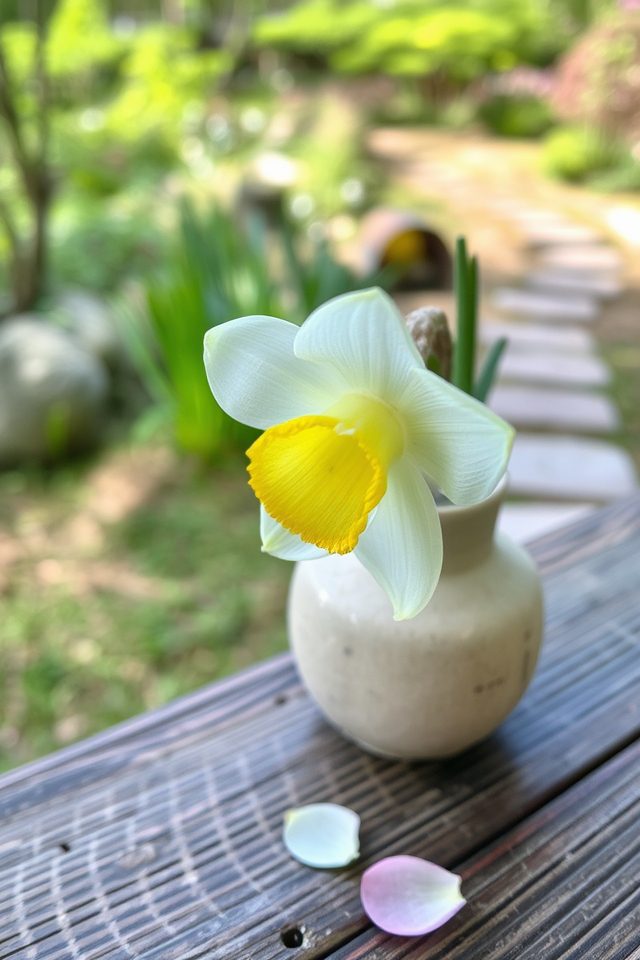
Narcissus, commonly known as Suisen in Japan, is a delicate and fragrant flower celebrated for its stunning blooms. Typically appearing in white or yellow, these flowers are among the first to bloom in spring, symbolizing renewal and the arrival of warmer weather. Suisen is often associated with purity and optimism in Japanese culture. In gardens and floral arrangements, they add a graceful touch, making them a beloved choice for seasonal celebrations and traditional events.
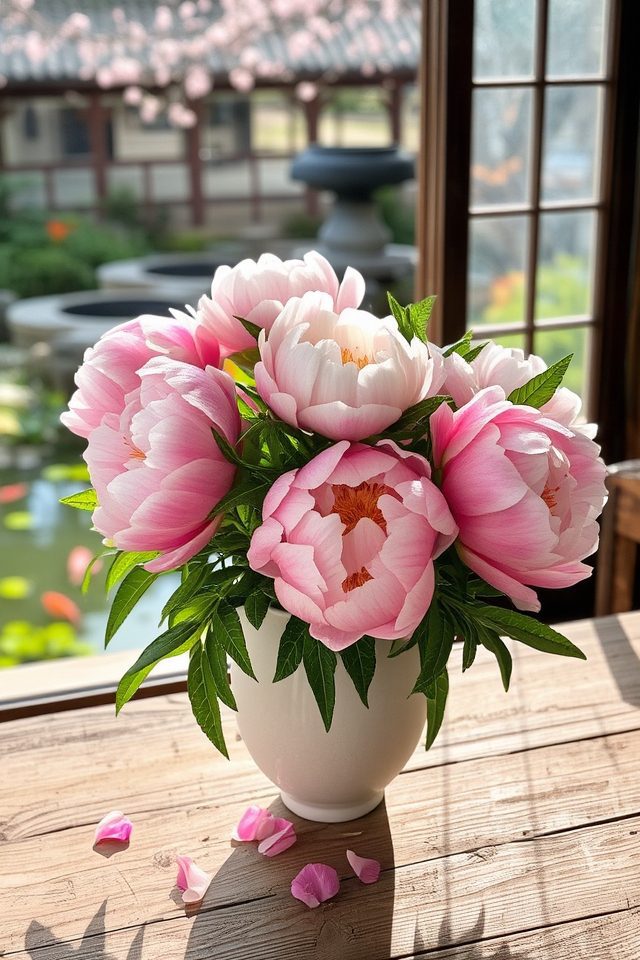
The Peony, known as “Botan” in Japanese, is a cherished flower celebrated for its lush, large blooms and enchanting fragrance. Often associated with prosperity, good fortune, and romance, peonies feature prominently in Japanese culture, particularly in art and festivals. Blooming in vibrant hues of pink, red, and white, these flowers thrive in spring, symbolizing beauty and transient life. Their elegant appearance makes them a popular choice in traditional gardens and floral arrangements throughout Japan.
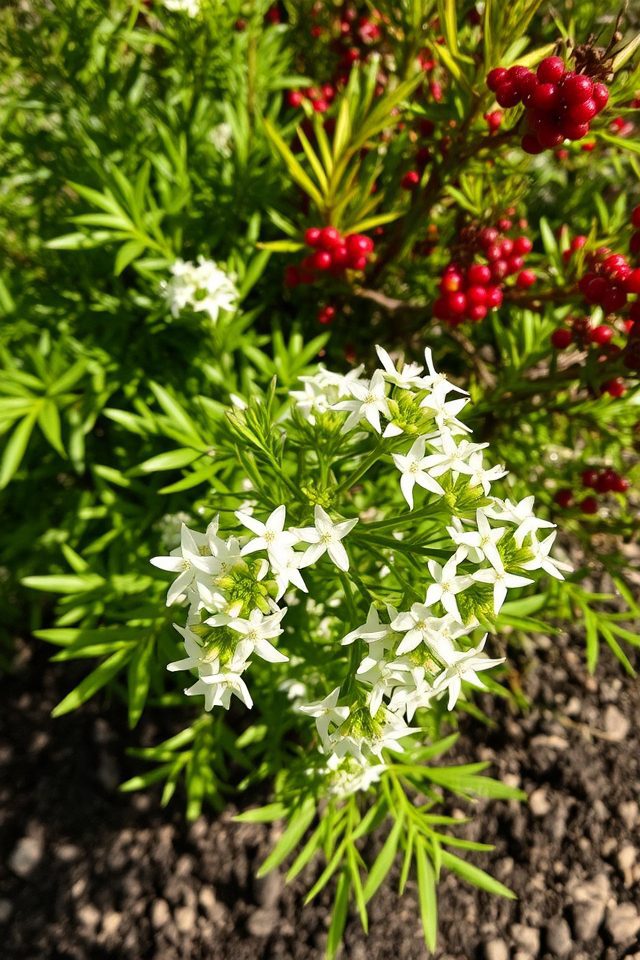
Nandina domestica, commonly known as heavenly bamboo, is a versatile evergreen shrub native to East Asia. Despite its name, it is not a true bamboo but boasts feathery, bamboo-like foliage. The plant is cherished for its striking seasonal changes, featuring clusters of small white flowers in spring that develop into vibrant red berries by autumn. Nandina is drought-tolerant, thrives in various soil types, and is often used in landscaping for hedges, borders, or as accent plants. Its decorative appeal and resilience make it a popular choice in gardens.
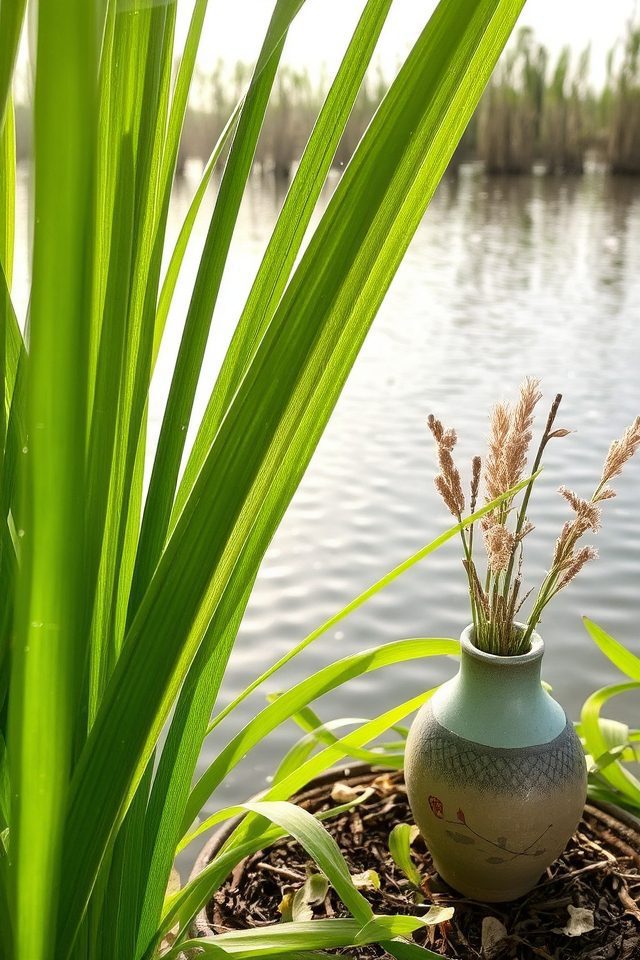
Japanese Sweet Flag, known as Shobu in Japan, is a perennial plant revered for its therapeutic properties and symbolic significance in Japanese culture. Often found in wetlands, its long, sword-like leaves and slender stalks create a lush habitat. During the Boy’s Day celebration (Tango no Sekku) on May 5th, Shobu is traditionally displayed to ward off evil spirits and promote strength and health. Its soothing scent and vibrant greenery make it a cherished element of Japanese gardens and festivals.
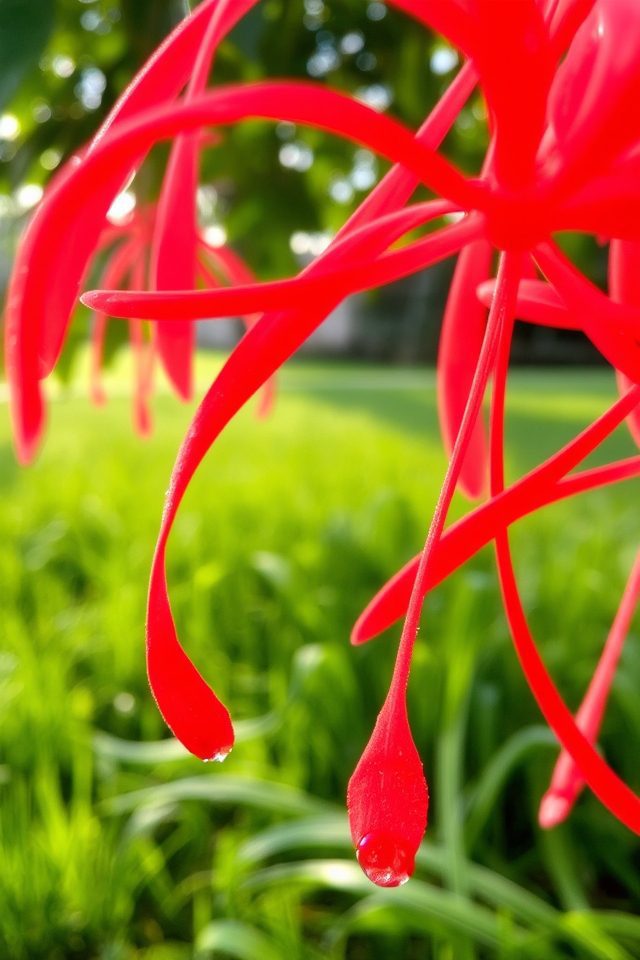
Higanbana, or Red Spider Lily, is a mesmerizing flower native to Japan, renowned for its striking crimson blossoms and unique, spidery petals. Blooming in late summer to early autumn, it often marks the arrival of the Higan, a period for honoring ancestors. This flower is steeped in symbolism, representing both beauty and the ephemeral nature of life. While stunning, it is also toxic, serving as a reminder of the delicate balance between allure and danger in nature.
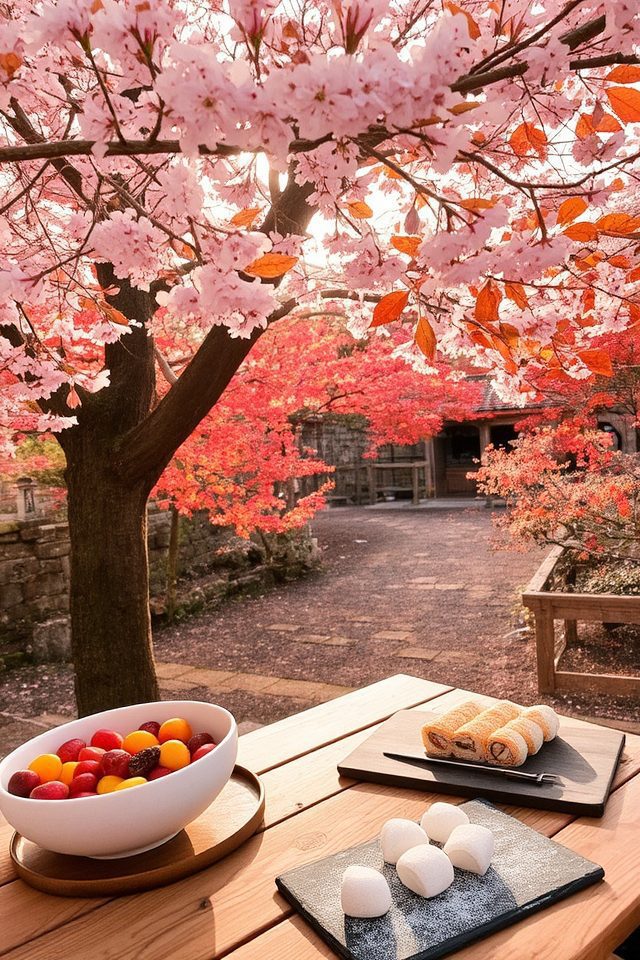
Shikizakura, or Four Seasons Cherry, is a unique cherry blossom tree that captivates with its dual bloom cycle. Native to Japan, this enchanting species produces blossoms in both spring and autumn, creating a stunning display of pale pink flowers against the backdrop of vibrant fall foliage. Shikizakura thrives in various environments, making it a popular choice in gardens and parks. Its ability to bloom twice a year symbolizes resilience and adaptability, embodying the beauty of nature’s cycles.
In Japan, flowers are more than just a visual delight; they embody cultural history and natural resilience. Did you know that the cherry blossom tree can bloom for nearly two weeks, covering landscapes in delicate pink petals? This breathtaking display draws around 15 million visitors to Hanami events annually, highlighting the nation’s appreciation for its floral heritage. By understanding these beautiful blooms—like the plum blossom and chrysanthemum—you deepen your connection to Japan’s rich cultural tapestry and natural beauty.

Don't let aphids, slugs, and caterpillars ruin another plant. Take back control with simple, natural methods that actually work.